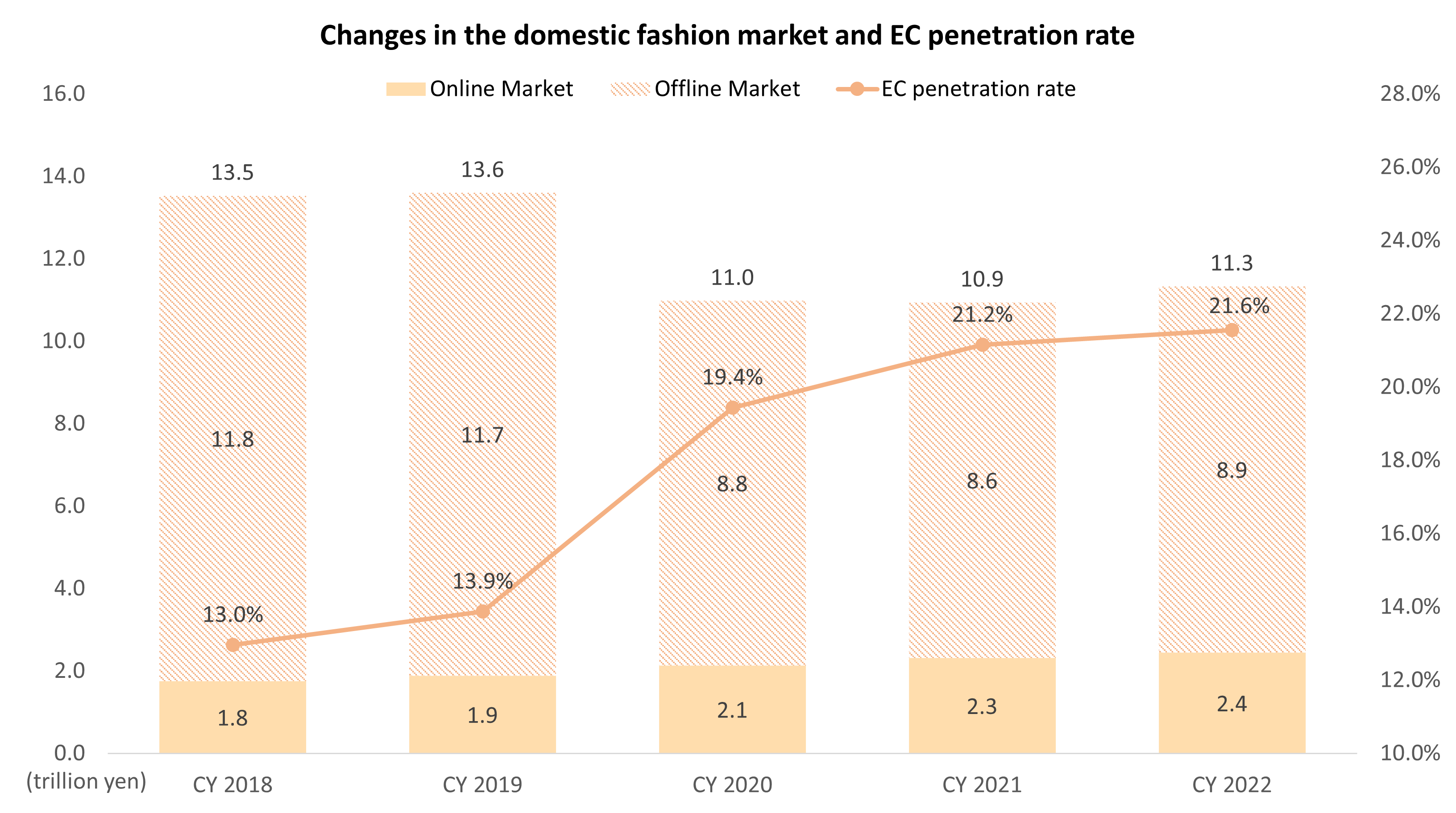Market Environment
< Fashion and Apparel Market >
The domestic market for clothing and personal belongings (apparel, shoes, footwear, Japanese/Western umbrellas, bags, trunks, handbags, sewing supplies, jewelry, and accessories excluding precious metals) is expected to be worth approximately 11.3 trillion yen in 2022, of which the fashion eCommerce market is assumed to be worth approximately 2.4 trillion yen. (Our estimate is based on the Current Survey of Commerce and Market Research on eCommerce published by the Ministry of Economy, Trade and Industry.) Although the overall size of the fashion retail market, including offline stores, shrank due to the spread of COVID-19, the eCommerce market continued to grow and rapidly shifted online. However, the ratio of the eCommerce market to the total fashion retail market (hereinafter referred to as "EC penetration") is still only about 20% in Japan, while it is around 30% in Europe and the U.S. This suggests that there is still much room for growth.
We classify the fashion eCommerce market into three areas: high price range, medium price range, and low price range.
Since our establishment, we had been building up our brand portfolio by opening stores mainly in the high and medium price range. However, in the past few years, we have been attracting brands in the low price range to meet diversifying needs. We will strive to attract more brands without limiting the price range in the future.
Based on an estimate that the fashion eCommerce market size is approximately 2.4 trillion yen, it can be said that our market share in terms of Gross Merchandise Value (excluding other GMV) is still around 20%. We will strive to acquire further growth opportunities by comprehensively increasing the number of brands while paying close attention to the branding of our website.
- In estimating the market share, we used the figures published from January 2022 to December 2022 for comparison.
< Cosmetics Market >
The domestic cosmetics market is estimated to be worth approximately 2.4 trillion yen in FY2022. In addition to a recovery in the performance of retailers, as consumers gradually increased their opportunities to go out and visit stores, inbound demand also showed signs of recovery, resulting in a recovery trend of approximately 103.5% compared to the previous fiscal year. (our estimate is based on a report by the Yano Research Institute). After FY2023, the impact of COVID-19 has subsided, and domestic demand is recovering. In addition, unit prices are expected to improve due to soaring costs of raw materials and higher value-added products, and inbound demand is also expected to recover due to a gradual increase in the number of tourists visiting Japan, and the market is expected to recover to the same level as the pre-corona market size in FY2027.
Like the fashion retail market, the cosmetics market also experienced a rapid shift to eCommerce affected by the spread of COVID-19. On the other hand, the EC penetration rate in FY2022 is less than 10%, which is even lower than that of the fashion retail market (our estimate is based on a report by Fuji Keizai and market research on eCommerce published by the Ministry of Economy, Trade and Industry).
We began handling cosmetics in March 2021. We are attracting a wide range of both domestic and international cosmetics brands. We will strive to grow this business by leveraging the compatibility with existing users who purchase fashion /apparel items.

